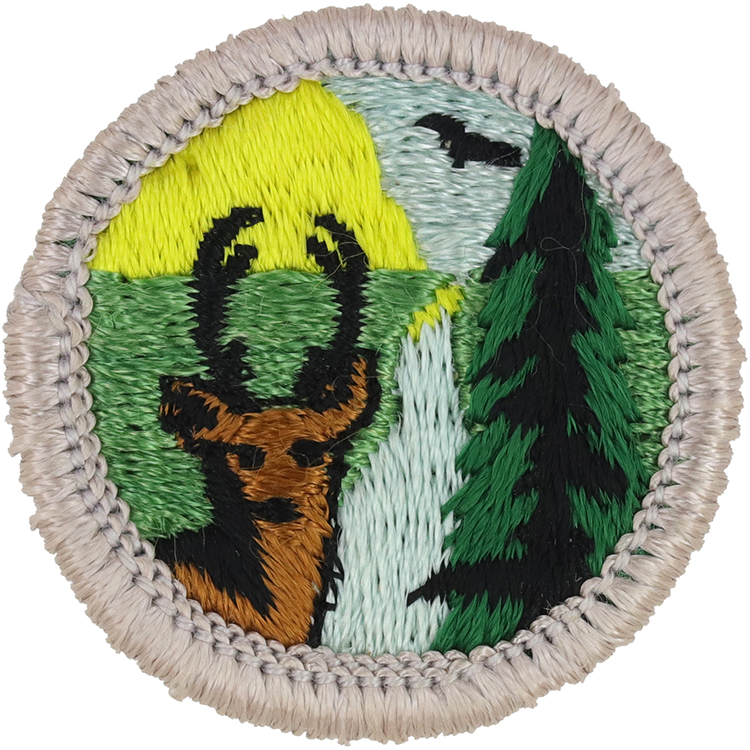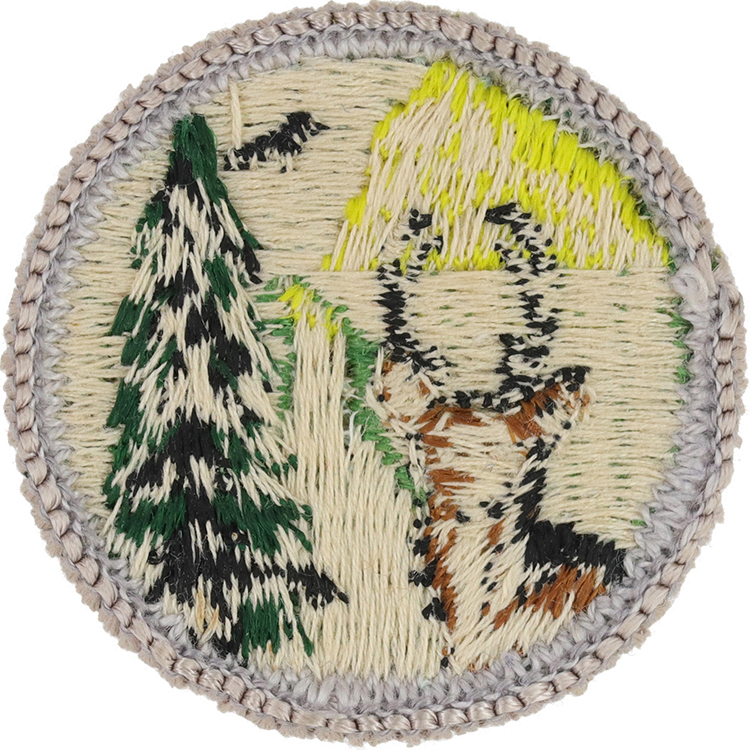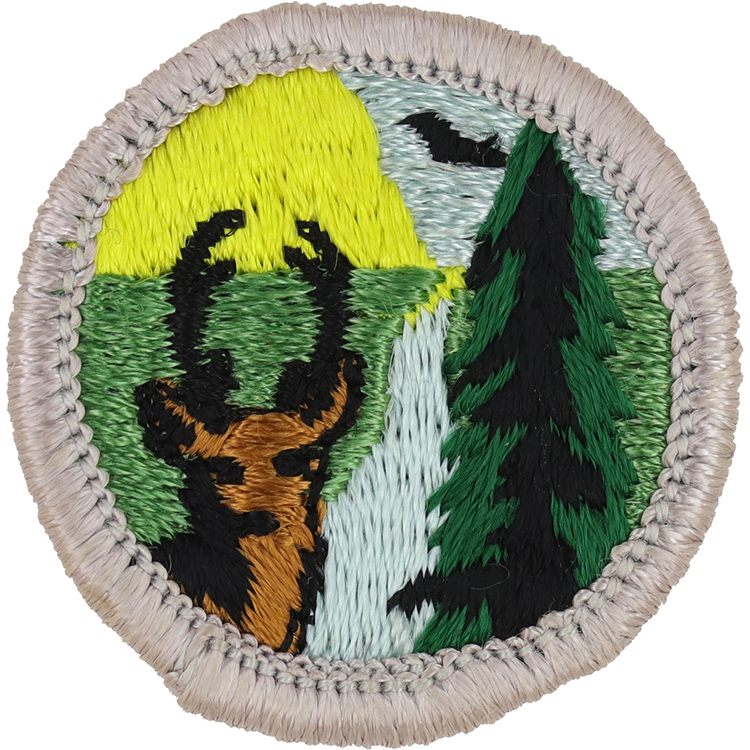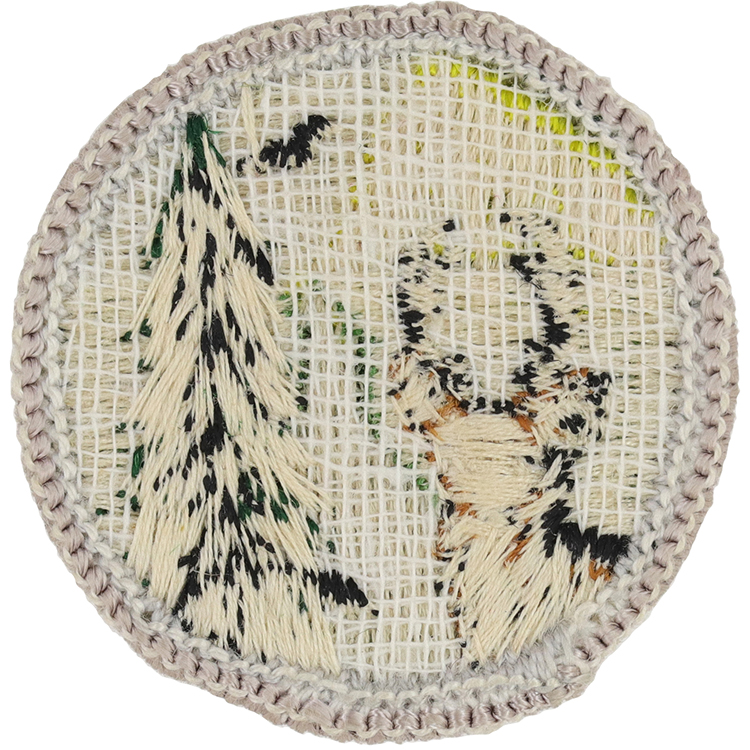
Fig. 1: ConRes-G2-Front
- Embroidery: Cotton thread
- Border: Merrowed

Fig. 2: ConRes-G2-Reverse
- Back: Starched cloth

Fig. 3: ConRes-G2-mve1-front
- Embroidery: Cotton thread
- Border: Merrowed

Fig. 4: ConRes-G2-mve1-reverse
- Back: Gauze reinforced starched cloth
Item Name: Conservation of Natural Resourses 1969 - 1972
Item ID: ConRes-G2
Collector Rating: 1
Requirements September 1967 until June 1972
1. Do the following:
(a) Define the terms "conservation", "renewable resources", and "nonrenewable resources" and give three examples of each.
(b) State five examples to show how our natural resources are vital to the strength and welfare of our country.
(c) Give three examples to show how our resources are interrelated.
2. Do the following:
(a) Explain what is meant by "resource management".
(b) List five Federal conservation agencies, the principal conservation agencies in your State, and five private (nongovernment) conservation organizations. Tell what they do. Describe three successful conservation projects in your area.
(c) Describe the duties connected with three career positions in natural resource conservation.
3. Do the following:
(a) name three international or worldwide conservation problems and describe one.
(b) Give one example of international cooperation in solving a conservation problem.
4. Do the following:
(a) Make a sketch to show the course of your home water supply from watershed to water tap.
(b) Find out if water supply is likely to be a problem in your community in the future and explain why.
(c) Give the principal causes and results of water pollution nationally and in your community. Find out what steps, if any, are taken to control water pollution in your area and tell what additional steps might be taken.
5. Give three examples of ocean resources. Choose one and discuss the conservation problems involved.
6. Explain the major causes of air pollution and tell how they might be prevented.
7. Tell how good land-use planning is important to five of the following: community planners, highway builders, camp planners, small landowners, farmers, ranchers, recreation planners, industrial and housing developers, fishermen, and hunters. (Before starting the projects in 8,9, and 10, discuss the scope and quality required with your counselor.)
8. Do ONE of the following:
(a) Locate and observe some examples of the letter problems in your community. Carry out a project o help make your community cleaner.
(b) Report to your troop or patrol on the conservation laws that affect you in your community or camp. Discuss: fire permits; fines for littering; and laws on fishing, hunting, water conservation, and air pollution.
9. After getting the approval of your counselor, carry out TWO of the following conservation projects alone or with other Scouts.
(a) Plant trees, shrubs, vines, or other natural cover to reduce soil erosion.
(b) Build gully control structures or water bars to stop erosion in a gully or trail.
(c) Riprap or plant natural cover to stop erosion on a streambank or lakeshore.
(d) Plant 50 pulp or timber yielding trees.
(e) Plant 10 ornamental trees or shrubs to help beautify your yard, park, or community.
(f) Build and put out two nest or den boxes or bird feeders, or one birdbath. Report on what birds or other animals used them. Plant 25 food shrubs for wildlife.
(g) Build a brush pile suitable for wildlife, as described in the merit badge pamphlet.
(h) Plant a hedgerow 50 feet long, suitable for wildlife cover.
(i) Select one natural resource, such as air, minerals or fuels, water, soil, forests, grasslands, fish, wildlife, or scenic wilderness or recreational area. Write an essay of 750 words that explains these points: (1) the importance of the resource; (2) the conservation problems of that resource; (3) what is being done to solve these problems; (4) how this resource affects other resources.
(j) Carry out a woodlot improvement or development project on 2 acres.
(k) Carry out a fish conservation project in a stream, lake, or pond.
(l) Attend an established conservation training camp for at least a week.
(m) Carry out a conservation project-approved in advance by the proper authorities-in a park, nature center, or on school property.
10. Select ONE conservation problem in your community or camp and do ONE of the following things to make other people aware of the problem:
(a) Build a window display or exhibit for a store, school, church, or other prominent place.
(b) Write a story and have it used by the local paper, school paper, troop paper, radio, or TV.
(c) Set up a demonstration project in camp as a model for others to follow.


